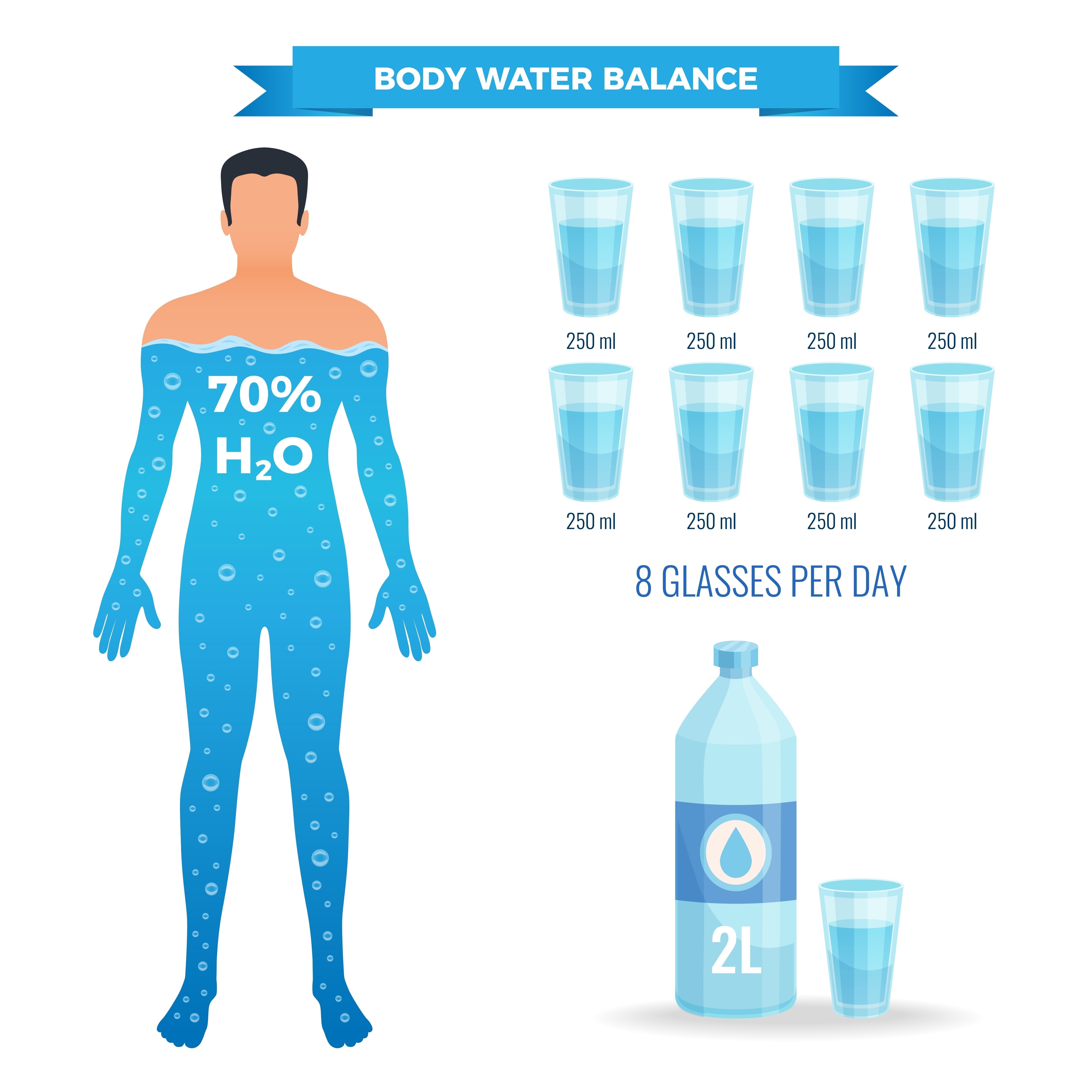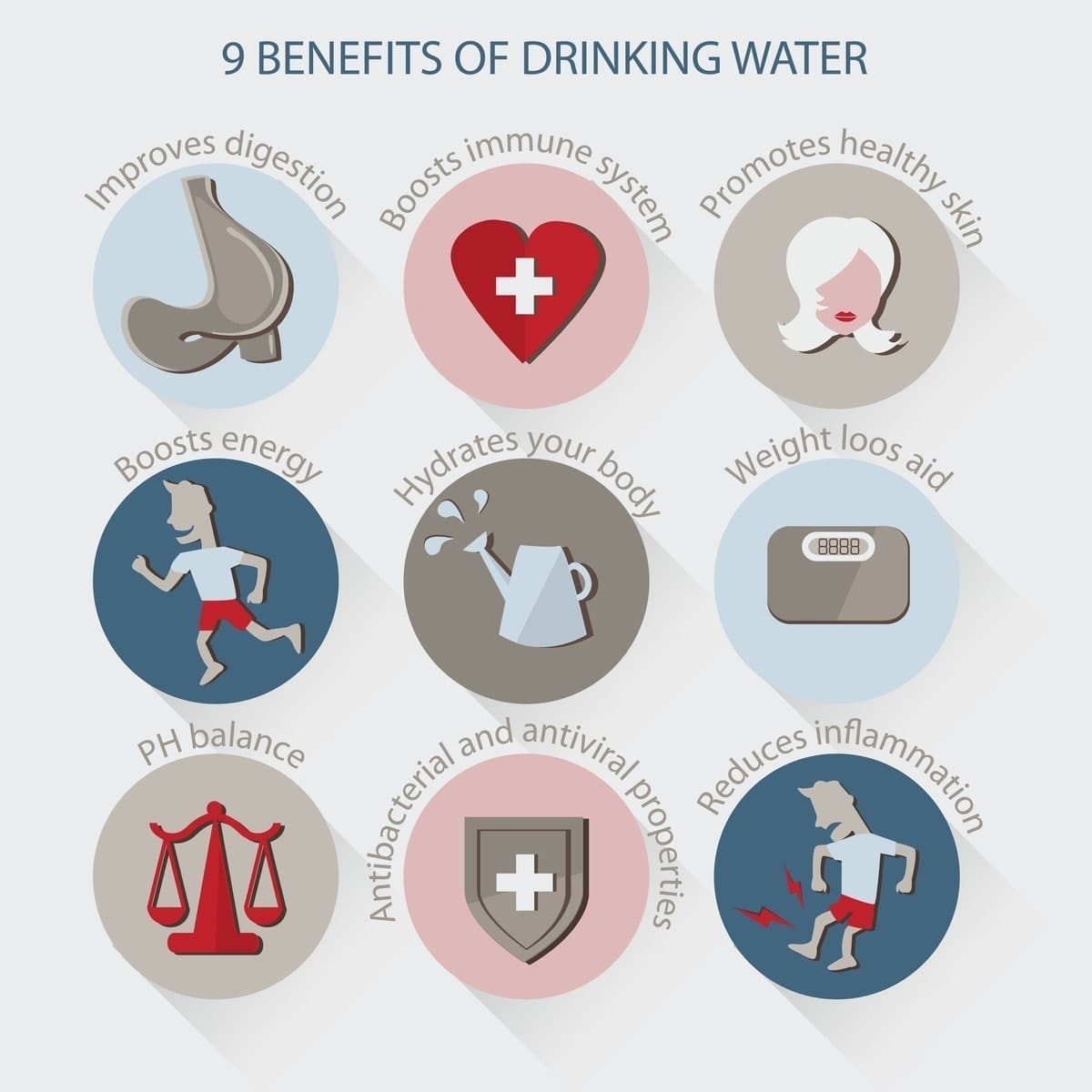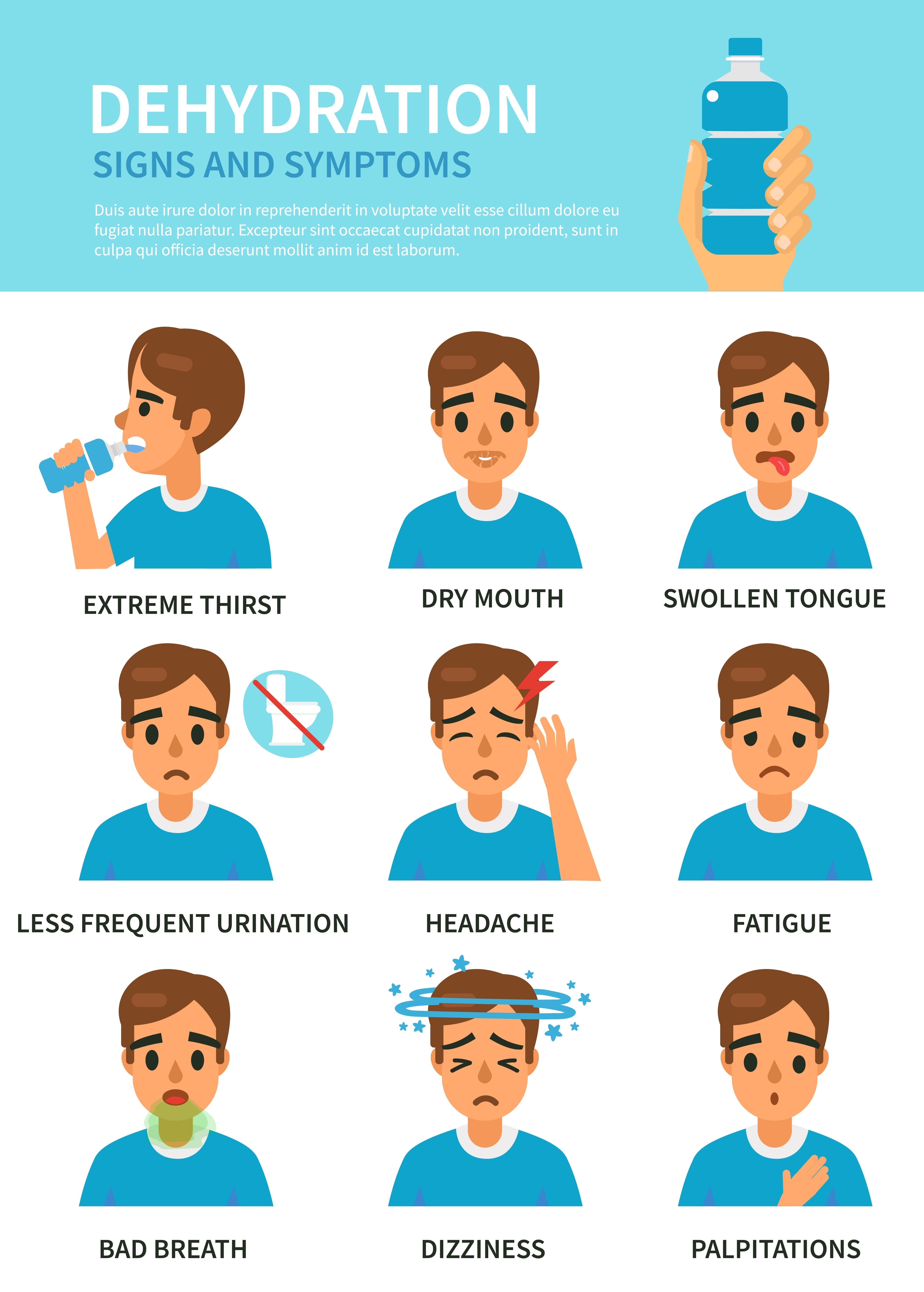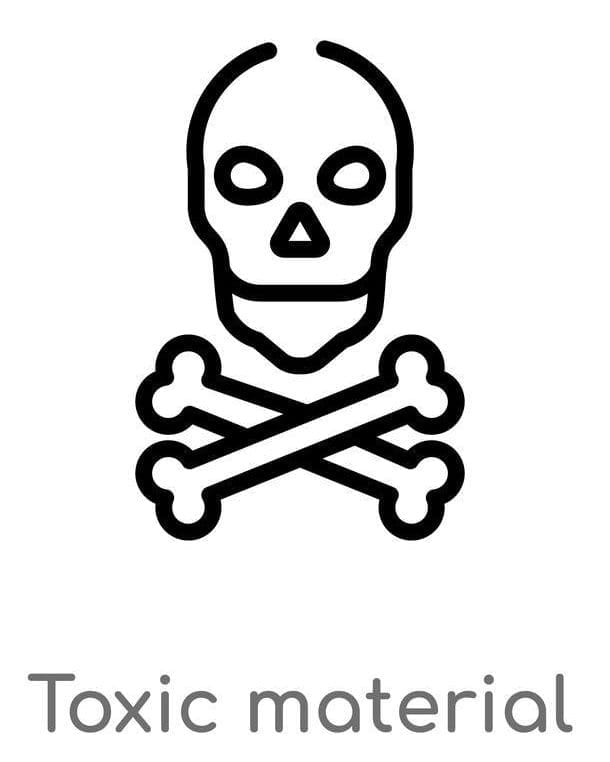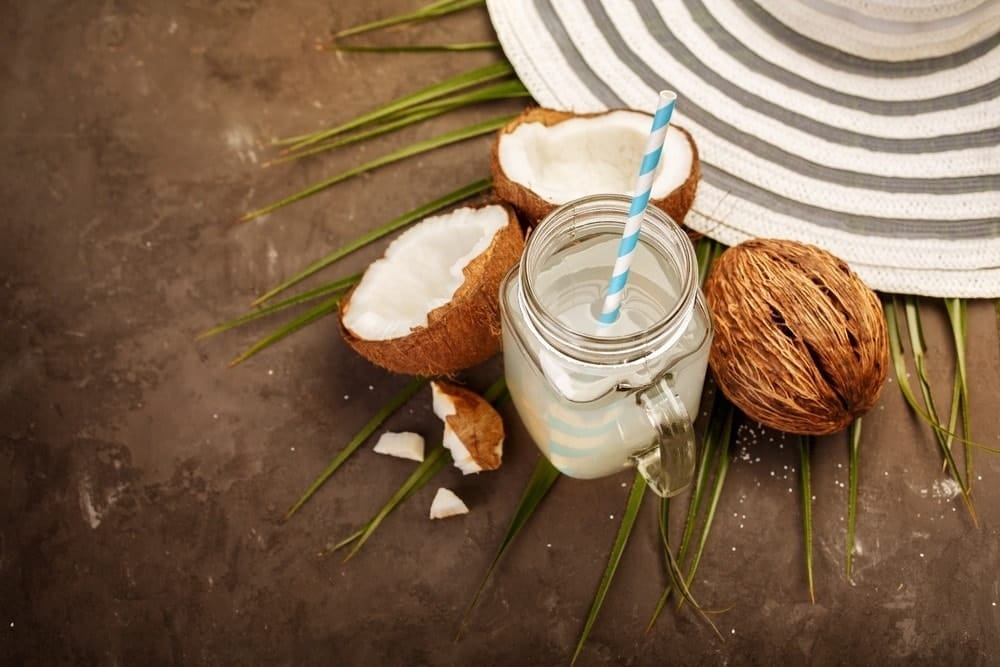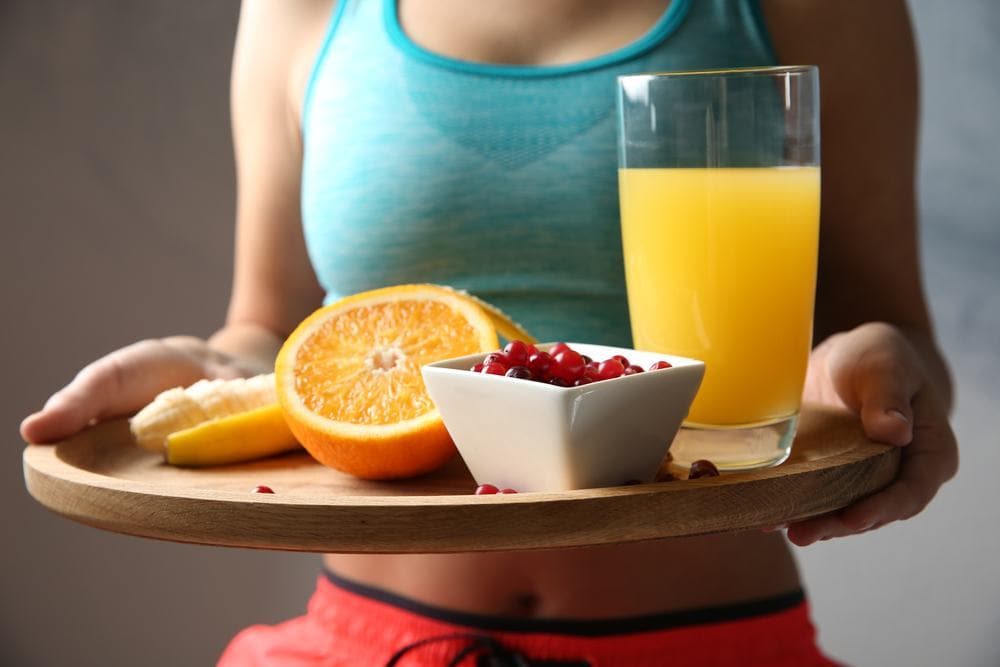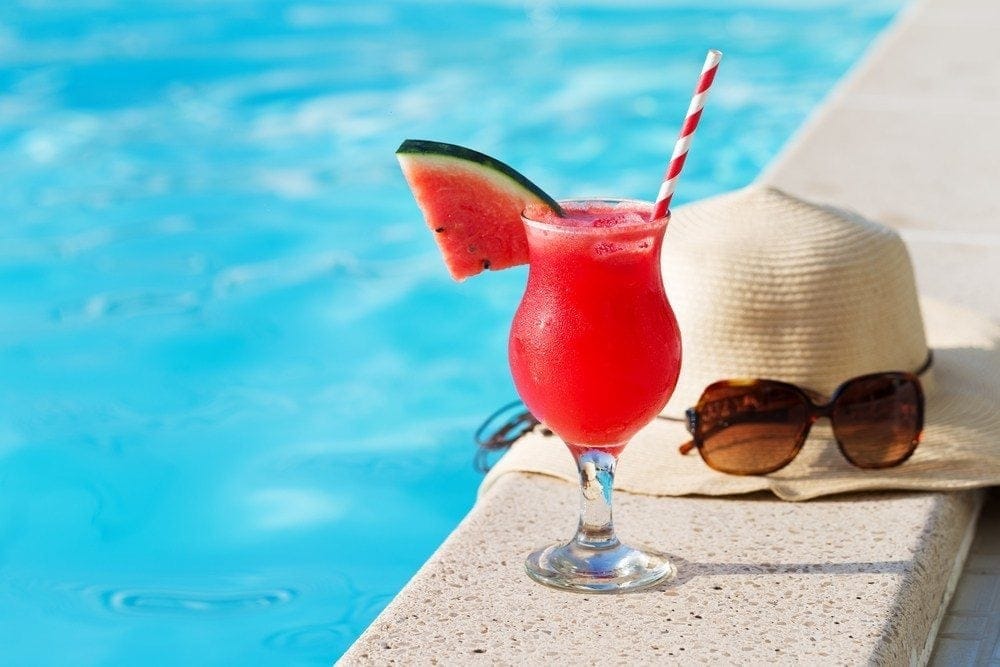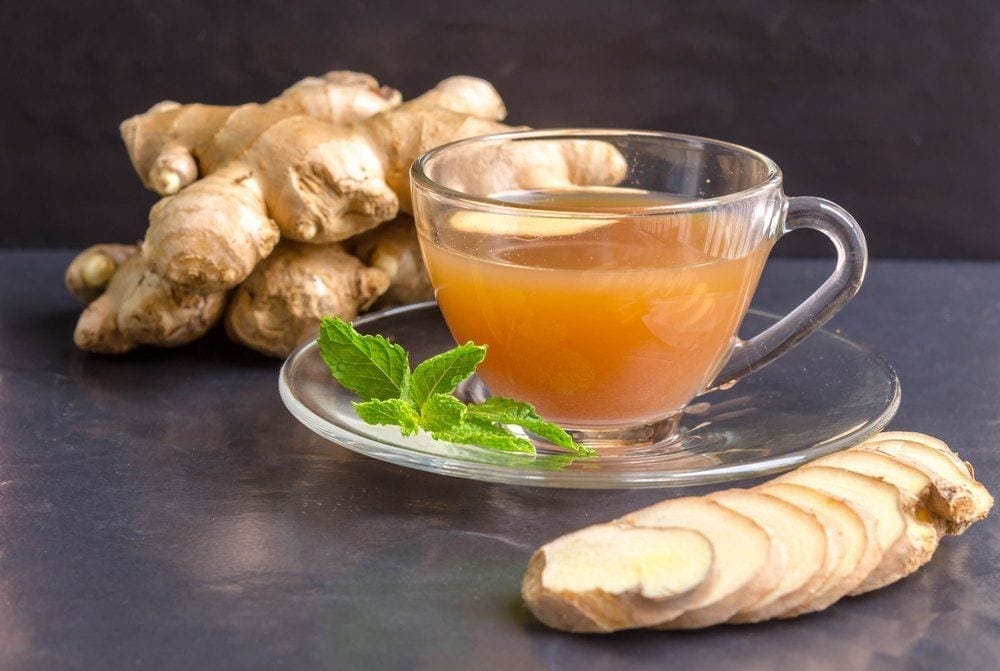Importance of Hydration in Combat Arts Workout Recovery
Dehydration can be a real problem for martial artists, MMA and UFC fighters. When UFC and MMA athletes are cutting weight before fights, often they do so by all possible means, which includes reducing fluid intake. This can lead to severe dehydration, setting them up for muscle cramps, decreased endurance, muscle and mental strength. Dehydration means there is not enough water in the body.
The body is approximately 60 to 70 percent water. Every cell, muscle and joint, the brain, the blood, the skin, every system in the body runs on water. It is considered the second most critical and essential physical need, and is second only to oxygen.
Body hydration, keeping the body fluids completely full or ‘topped off,’ is absolutely essential for proper training. Dehydration occurs when the body puts out or releases more water in the form of sweat, water vapor, etc. than it takes in.
Fourth Quarter Fatigue
Martial artists, fighters, and athletes experiencing “Fourth Quarter Fatigue” need to know it is often caused by dehydration, resulting in decreased cognitive and mental performance, decreased muscle strength, endurance, and muscle cramps. Thus, making post workout hydration an even more critical part of the training regimen.
Dehydration, if left unchecked, can lead to heat exhaustion, heat stroke, coma, and even death. Recently, an Australian teenage Muay Thai fighter, 18 year old Jessica Lindsay, collapsed while going for a run the day before her fight. She died of severe dehydration while attempting to cut weight for the fight.
Water Usage Within the Body
The body runs on water. Compare the effects of a car engine that is low on water and oil. The car breaks down quickly, if it runs at all, because of overheating. If there is not enough lubrication within moving parts (similar to body joints without enough water), pistons and other parts simply break down and stop functioning. The body is extremely similar in its need for water.
The Body Requires Water to:
- Create and cleanse the blood
- Metabolizes food into energy
- Move nutrients through the body and to cells
- Cleanses toxins out of the body
- Maintains body temperature via sweating
- Moisturize the skin
- Ensures proper food digestion to ensure proper brain function
- Metabolizing fat
- Supplies oxygen to cells through the blood
- Creates Synovial fluid to lubricate joints
- keeps mucous membranes moist
Water for Athletic Performance
Water is vitally important for athletic performance. Martial artists particularly utilize every muscle in the body. Active muscles burn water, and overheat the body, which then requires more water to cool it down. Think of water as a performance enhancer that’s very reasonably priced! For the serious athlete it’s critically important to stay hydrated. Good hydration means getting the right amount of pure water before, during, and post workout.
Water regulates body temperature and keeps joints lubricated. It helps transport nutrients to give the body energy and keep it healthy. The body cannot perform at its highest level when dehydrated. Symptoms of fatigue, muscle cramps, confusion, dizziness, headache, and other serious dehydration signs may occur. It’s simple: studies have shown that athletes have a decrease in performance when dehydrated. Athletic energy and focus declines considerably and performance dive-bombs when dehydrated[3].
Staying Hydrated Can Help With Proper Recovery of Your Cells and Muscles
Learn More by Subscribing Today
Many MMA and UFC Fighters are Severely Dehydrated Before Competitions
There are studies out now proving that many MMA and UFC athletes are severely restricting water intake before competitions in order to cut weight. This is totally reverse logic since dehydration will make or break you in the ring. If the body is dehydrated, one of the signs is that the brain starts to shut down. Research shows that a hydrated brain has more active areas than a dehydrated one, meaning, completely hydrated fighters are sharper and think better on their feet.
Dead Within Days
It is possible to go three weeks without eating, but the body will expire within 2.5 to 7 days without water.
How much water is required to maintain a fully hydrated body depends on many factors, including individual physiology, amount and types of exercise performed, duration and intensity of training, how often, along with local atmospheric conditions, i.e., how hot, humid, dry it is where one lives and/or trains.
The body is unable to store water, yet needs it kept at a consistent level in order to function properly. Water contains zero calories, but is considered an essential nutrient, because it makes up to 70 percent of the body’s composition.
Signs of Dehydration
Typically, first signs will be headache, nausea, weakness, confusion, muscle cramps, and lightheaded. Nobody wants to feel like this during training or competition! Dehydration is a serious issue that if left unchecked can quickly become an emergency. Dehydration makes heart rate increase, blood flow to the skin decrease, and body temperature rise because the body loses the ability to monitor and lower body temperature. Signs of dehydration vary, depending on circumstances, severity, and the individual.
Some Typical Signs of Dehydration Include:
- Muscle cramps
- Nausea
- Confusion or ‘wrong’ thinking
- Irritability
- Dry, cracked lips and/or tongue
- Scant, dark colored urine
- Lack of sweating
- Low energy, apathetic behavior
- Sunken eyes, dark circles
- Weakness
- Loss of consciousness
Heat Illness
There are physical illnesses that may result from dehydration. These heat illnesses occur because the body cools itself and controls temperature through sweating. When dehydration occurs, the body will try to conserve water by not sweating normally. An athlete’s muscles are heating the body through training, which normally leads to sweating in order to cool the body back down. The three heat related illness are: heat cramps, heat exhaustion, and heatstroke. All three of these heat illnesses are serious.
Heat cramps are painful muscle spasms in the legs, arms, back, or stomach, and are the initial stage for heat stroke. Heat illness then progresses into heat exhaustion, with symptoms of feeling faint or weak, headache, nausea, low blood pressure, and fast heartbeat. Symptoms of heatstroke include fast heartbeat, high body temperature (104 degrees and up), flushed skin, can even include delirium, loss of consciousness, or seizures. Heatstroke is a life-threatening emergency that can lead to death and requires immediate medical aid.
Fight Almost Lost Due to Severe Dehydration
UFC fight of Aug. 3rd, 2013, between UFC featherweight champion Jose Aldo and Chan Sung Jung was almost lost due to Aldo’s severe dehydration. Oh sure, Aldo had other injuries like the broken foot he got in the first round (!), and by the end of the fight Jung also had a broken foot and dislocated shoulder. But, Aldo also went to the hospital for kidney stones, which research proves are commonly brought on by severe chronic dehydration of the type created by cutting weight.
Area Conditions Do Count
It requires quite a bit more water to remain hydrated when training intensely in the semi-arid Southwestern region of the U.S. where temperatures can easily soar to 115 degrees with 8 percent humidity.
For instance, than it does to stay hydrated when training at a similarly intense level in the more temperate and humid Northeastern U.S. Or think about training in Death Valley, where average temperatures are in the triple digits, and in 2017 reached 127 degrees during the day in summer with low humidity.
Training outdoors there is regarded as a safety hazard because it is so desperately hot.
It also matters whether training takes place indoors with air controlled conditions, or if it involves running up hiking trails in the mountains, or doing sandy beach kung fu. Always take into account the local area conditions, unless training inside with controlled temperatures.
Hydration Considerations:
- Water for life. Athletes can and do die from dehydration. Water is important for increasing flexibility, contributes to increased mobility, and helps with total body relaxation. Water is absolutely necessary for every biochemical reaction that occurs in the body [6].
- Water is essential. Water is required to moisten food to allow for nutrient breakdown through saliva. Water is needed to further digest food in the form of gastric secretions. Water is essential for blood that transports nutrients around the body to and from cells, to discard waste in the form of urine and feces, and for body temperature regulation to release excess heat in the form of sweat.
- Water is an essential nutrient, necessary to creating every part of the body, including skin, muscles, and organs. Water composition:
- Water makes up the largest part of the blood, comprising approximately 93 percent of blood fluid. Muscle tissue also contains a high percentage of water. Muscle is about 73 percent water, whereas body fat only contains about 10 percent water. Every day, 4 to 10% of the body’s water gets replaced through body cleansing actions and blood flow.
- Body releases water daily. The body releases water every single day, and must take in more to maintain all biological systems at optimal functioning levels. The body utilizes muscles every day to function. Muscles burn glycogen, and in doing so, release water at the same time. The average person releases about 8 to 16 ounces of water every day for normal physical functioning. An athlete’s muscles, however, for instance a Brazilian Jiu Jitsu fighter, MMA fighter, capoeira fighter, or marathoner, can release that much water in just two to three hours during extremely intensive training or competition.
- The thirst response. Never ignore thirst. The body knows to drink more fluids when the blood has an increased number of particles. This change in the blood composition is a sign to the body. It triggers a thirst response. When the body has lost 1 percent of its weight in fluid, the thirst response normally kicks in. The body is seriously dehydrated by the time it has lost 5 percent of its weight in fluid.
- Once water levels become too low, there will be a reduction in sweat response. This can be a life-threatening situation for the athlete, particularly when training in a hot environment. Sufficient water is essential for regulating body temperature. Body fluids absorb heat from the muscles, and sweat protects the body by dissipating heat both from training and when in hot environments.
Monitor Your Body
- Measure your sweat output! Discover exactly how much fluid intake is required for an average training session, competition, class, or game. It’s easy to measure the drop in body fluids after workouts if you have a good scale. This will aid in approximating the amount of water needed to bring body fluids back up to normal. Check weight without clothing before and after one hour of intensive training, without drinking any liquids in the interim. The amount of weight lost is the average amount of body fluids used during that length and level of training in those atmospheric conditions. A one pound loss equals the loss of 16 ounces of sweat.
- Electrolytes are important.
The body loses fluid from inside and outside of cells during training. Sodium and potassium are two electrolytes working together to maintain cell integrity and balance fluids within the cells. Sweat contains about 7 times more sodium than potassium, which is why it is especially important to replace the electrolyte sodium during prolonged training. Sports drinks are not necessarily recommended because they contain too much sugar, or corn syrup which is even worse. Nuun Sport Electrolyte Tablets are designed with complete electrolytes and Non-GMO ingredients for clean, guilt-free hydration that works very well. They are used by athletes for heat prostration, muscle cramps, fatigue, headache and other symptoms caused by excessive perspiration.
- Athletic Performance affected by dehydration.
When the weather is cooler, an athlete has slightly more leeway with how hydration affects athletic performance. However, hydration is absolutely essential to an athlete’s performance when training during hot weather. A distance runner’s pace in hot weather will slow by about 2 percent with a fluid loss of even only one percent of body weight. Our hypothetical distance runner’s pace will continue to slow by another 2 percent--with every one percent of body fluids lost. Once 10 percent of body fluids have been lost it becomes critical and life threatening to the athlete.
- Cooler weather and type of training.
Body fluid loss is not as life threatening during cooler weather, and when exercising using short rounds of interval training such as weight lifting.
- Optimal hydration improvements. Optimal hydration also helps prevent constipation, aids and prevents urinary tract infections, help remove toxins and improve skin tone, and supports weight loss.
- How much water? How much water to drink every day is dependent upon many different factors, including amount, level and type of training involved; heat, humidity and other atmospheric conditions; exercising inside or outside; even heredity and food intake, since foods such as lettuce help supply fluids. In general, it is advised to drink 15-20 ounces of water within three hours before intensive training, 4-8 ounces during training session, and replace 24 ounces of water for every pound of body weight lost during training
How Much is Enough?
- 8 glasses a day—since when! There are no scientific studies to back up the eight glasses of water per day idea.
- One gallon of water per day. One theory that seems to hold true especially during extreme training and/or when training in very hot or dry conditions is aim to drink about one gallon of water per day, more or less.
- How to monitor water intake.
Decide how much water intake per day is optimal and then plan around it. For instance, if drinking about a gallon of water per day gives an athlete optimal performance, buy a quart-size, non-BPA water bottle, take it with you, aim to fill and empty it 4 times during the day.
- One way to monitor the body’s level of fluids is watching urine color. A chart is provided down below. In general, though, very clear urine is close to too much water, very pale yellow like pale straw is optimal, darker than that probably means drink some water. If the color is dark, or there is no urine for 7 or more hours, the body is very dehydrated, and care must be taken to increase fluid intake immediately. Keep in mind that eating certain foods may affect color along with smell, like asparagus, for instance, and that taking certain supplements including some vitamins, may affect urine color, as well[7] . France and other countries have banned BPA. Support the USA in protecting its people and the environment by insisting it ban BPA, as well.
7 signs of BPA toxicity include:
- Weight Gain
- ADHD
- Erectile Dysfunction
- High Blood Pressure
- Heart Disease
- Early Puberty
- Breast Or Prostate cancer
Don't Believe the Hype
- Sports drinks are mostly hype. Water or sports drink? There have been many studies since the 1960s promoting the use of sports drinks. The unfortunate truth about many of these studies, beginning in the 60s with Gatorade, is that the company itself is paying for and documenting its own studies and proving its own claims, which means these studies are basically meaningless. In general, sports drinks contain a very high amount of sugar or corn syrup, many contain caffeine, some also have guarana (not recommended) and other additives, which may temporarily give energy. These same ingredients can also give weight gain, the shakes (too much caffeine), heart palpitations (guarana), and a big letdown of energy that does nothing in the long run to improve training [9] .
- Save Your Money!
The British Medical Journal (BMJ) has published several articles basically saying drink water and save your money, because sports drinks not only do not help get you get into shape, but by drinking water instead--you’ll lose weight, get thinner, and run faster, along with saving money[10] .
- Overhydrating is not good, either.
People actually die from it. Problems are created by overhydrating, so more is not always better! In fact, overhydration, or hyponatremia, is very dangerous and life-threatening, because it dilutes the sodium levels in the body, causes the cells to become water logged, the brain to swell, and the kidneys are unable to excrete enough fluid to protect the body. The hands and feet become swollen, consciousness becomes altered, mood changes and muscle twitches may occur.
To learn more about how to prevent these issues, read our post on "Avoiding Dehydration Issues."
How Many Glasses of Water Are You Drinking a Day?
Homemade Energy Electrolyte Drinks
You can make your own sports/electrolyte drinks at home. Just be warned, they may not taste as good as what you buy in the stores. A home kitchen doesn’t have access to the chemical flavor additives the big companies use.
Most of these recipes use coconut water, mineral/vitamin drops, and sea salt. These are important to the method and cannot be switched out. Honey is added for both flavor and carbohydrates.
Coconut water has 600 mg of potassium, 60mg of magnesium, and 252 mg of sodium per cup in the form of chloride and sulfate salts[11] . All of the electrolytes in this drink are easily assimilated in the body. Coconut water could be a sports drink on its own.
The mineral/vitamin drops add a few more nutrients, making the sports drink more rounded concerning nutrition. They aren’t necessary, but an easy way to get more vitamins and minerals into your diet. Concentrace is one brand.
The sea salt adds the remaining sodium, as the body can lose a gram of sodium in an hour’s workout[13]. It also adds trace amounts of magnesium and sodium, depending on the source. Regular table salt or refined sea salt cannot be substituted, as these trace elements are removed.
Honey and natural maple syrup are natural sweeteners and supply some trace minerals. They aren’t necessary for the sports drink, but certainly adds flavor and texture to the fluid. Plus, they can give you a boost of energy from the carbs to improve post workout hydration.
- Orange Sports Drink
- Watermelon Cooler
- Ginger Warming Drink
- 2 cups coconut water
- 1 cup freshly squeezed orange juice
- 1/4 cup lemon juice
- 1/8 teaspoon sea salt
- 1-2 tablespoons honey
- a few drops of minerals drops (optional)
- Mix all ingredients fresh daily and keep cool.
- 2 cups coconut water
- 1 lb fresh cut and seeded watermelon
- 1/8 teaspoon sea salt
- 1-2 tablespoons honey
- a few drops of minerals drops (optional)
- Blend all ingredients fresh daily and keep cool.
- 2 cups coconut water
- 1 cup ginger water (6-7 thin slices of fresh ginger plus 1 cup boiling water–let steep 15 minutes)
- 1/4 cup lemon juice
- 1/8 teaspoon sea salt
- 1-2 tablespoons honey
- a few drops of minerals drops (optional)
- Mix all ingredients fresh daily and keep cool.
As you can see, the basic recipe stays the same, and the flavors vary. You can also try:
- Cranberry juice to aid kidney function after a dehydration event or kidney stones
- Herbal teas like lavender and lemon balm during periods of stressful events
- Carrot juice to support eye health and give more energy
- Cucumber juice during hot weather
- Winter squash and hot pepper juice during cold months (warms you very well)
When to See a Doctor
You should see a doctor immediately if you have symptoms of dehydration, heat exhaustion, or heatstroke. You should also see a doctor if you have symptoms of a rare condition caused by drinking too much, called hyponatremia. These include confusion, headache, vomiting, and swelling of the hands and feet.
